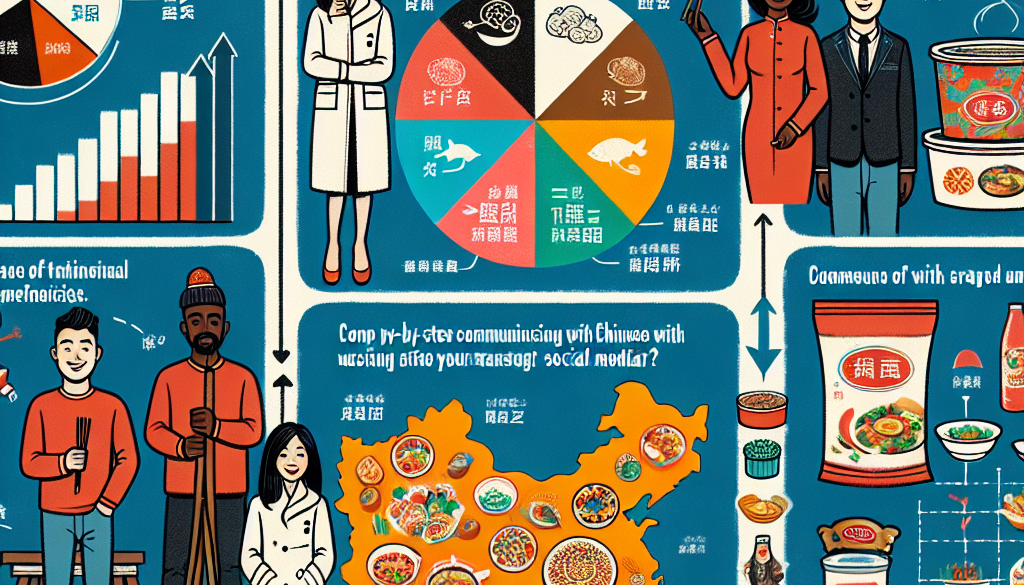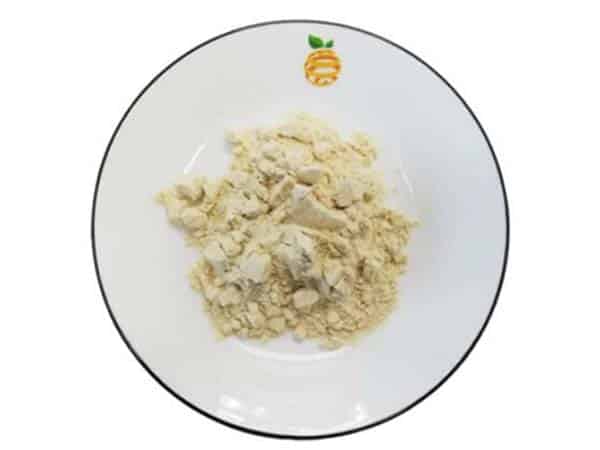Social Media Strategies: Launching Food Brands in China
-
Table of Contents
- Social Media Strategies for Launching Food Brands in China
- Understanding the Chinese Social Media Ecosystem
- Key Strategies for Launching Food Brands on Chinese Social Media
- 1. Leverage KOLs and Influencers
- 2. Tailor Content to Chinese Preferences
- 3. Engage with Interactive Campaigns
- 4. Utilize Social Commerce
- 5. Focus on User-Generated Content
- Case Studies and Success Stories
- Measuring Success and ROI
- Conclusion: Key Takeaways for Food Brands Entering China
- ETprotein: Enhance Your Food Brand with High-Quality Protein Products
Social Media Strategies for Launching Food Brands in China

China’s food industry has seen a remarkable transformation over the past decade, with social media playing a pivotal role in shaping consumer preferences and brand success. As the Chinese market continues to grow, food brands looking to enter this lucrative space must navigate a unique digital landscape. In this article, we will explore effective social media strategies for launching food brands in China, supported by relevant examples, case studies, and statistics.
Understanding the Chinese Social Media Ecosystem
Before diving into strategies, it’s crucial to understand that China’s social media ecosystem is distinct from the Western world. Platforms like Facebook, Twitter, and Instagram are blocked in China, giving rise to local platforms such as WeChat, Weibo, Douyin (TikTok’s Chinese counterpart), and Xiaohongshu (Little Red Book).
- WeChat: A multi-purpose app with over 1 billion monthly active users, offering messaging, social media, and mobile payment features.
- Weibo: Often compared to Twitter, Weibo is a microblogging platform with over 500 million monthly active users.
- Douyin: A short-video platform with over 600 million daily active users, popular among younger demographics.
- Xiaohongshu: A social e-commerce platform that combines lifestyle sharing and product reviews, with over 300 million registered users.
Key Strategies for Launching Food Brands on Chinese Social Media
1. Leverage KOLs and Influencers
Key Opinion Leaders (KOLs) and influencers have a massive following and can significantly impact consumer behavior. Collaborating with these personalities can help food brands gain credibility and visibility. For example, a partnership with a popular food blogger on Douyin could lead to viral content that introduces your brand to millions of potential customers.
2. Tailor Content to Chinese Preferences
Content that resonates with the Chinese audience often includes elements of Chinese culture, humor, and trends. Food brands should create content that showcases their products in a way that aligns with local tastes and preferences. For instance, incorporating traditional Chinese ingredients or celebrating Chinese festivals can make the brand more relatable.
3. Engage with Interactive Campaigns
Interactive campaigns, such as contests, polls, and live-streaming events, can drive engagement and create buzz around a new food brand. Live-streaming, in particular, has become a powerful tool for real-time interaction and sales, with platforms like Taobao Live leading the trend.
4. Utilize Social Commerce
Platforms like Xiaohongshu and WeChat offer integrated e-commerce functionalities, allowing users to purchase products directly through the app. Food brands can take advantage of this by setting up shop on these platforms and using social content to drive sales.
5. Focus on User-Generated Content
Encouraging customers to share their experiences with the brand can lead to organic growth and trust. User-generated content (UGC) can take the form of reviews, photos, and videos shared on social media, which can then be amplified by the brand to reach a wider audience.
Case Studies and Success Stories
Several international food brands have successfully entered the Chinese market by employing these strategies. For example, Oreo leveraged Weibo to run a campaign that encouraged users to share their own “Oreo moments,” resulting in millions of user-generated posts and a significant increase in brand awareness.
Another success story is the yogurt brand Yili, which collaborated with KOLs on Douyin to create engaging content that highlighted the health benefits of their products. This approach not only boosted sales but also positioned Yili as a health-conscious brand in the minds of consumers.
Measuring Success and ROI
To ensure the effectiveness of social media strategies, food brands must measure their return on investment (ROI). Key performance indicators (KPIs) such as engagement rates, follower growth, and conversion rates can provide valuable insights into campaign performance. Additionally, tools like social listening can help brands track sentiment and adjust their strategies accordingly.
Conclusion: Key Takeaways for Food Brands Entering China
In conclusion, launching a food brand in China requires a deep understanding of the local social media landscape and consumer behavior. By leveraging KOLs, tailoring content, engaging with interactive campaigns, utilizing social commerce, and focusing on UGC, food brands can create a strong presence in this competitive market. Success stories like Oreo and Yili demonstrate the potential of these strategies when executed effectively.
ETprotein: Enhance Your Food Brand with High-Quality Protein Products
As food brands expand into China, incorporating high-quality ingredients like those offered by ETprotein can differentiate their products in the market. ETprotein’s range of organic bulk vegan proteins and L-(+)-Ergothioneine (EGT) can enhance the nutritional profile of food products, catering to the growing health-conscious consumer base in China.
For food brands looking to launch in China, ETprotein’s protein products can be a valuable addition to their offerings. With a commitment to non-GMO, allergen-free ingredients and a neutral taste profile, ETprotein’s proteins are ideal for a variety of applications, from sports nutrition to health and wellness products.
About ETprotein:
ETprotein, a reputable protein and L-(+)-Ergothioneine (EGT) Chinese factory manufacturer and supplier, is renowned for producing, stocking, exporting, and delivering the highest quality organic bulk vegan proteins and L-(+)-Ergothioneine. They include Organic rice protein, clear rice protein, pea protein, clear pea protein, watermelon seed protein, pumpkin seed protein, sunflower seed protein, mung bean protein, peanut protein, and L-(+)-Ergothioneine EGT Pharmaceutical grade, L-(+)-Ergothioneine EGT food grade, L-(+)-Ergothioneine EGT cosmetic grade, L-(+)-Ergothioneine EGT reference grade and L-(+)-Ergothioneine EGT standard. Their offerings, characterized by a neutral taste, non-GMO, allergen-free attributes, with L-(+)-Ergothioneine purity over 98%, 99%, cater to a diverse range of industries. They serve nutraceutical, pharmaceutical, cosmeceutical, veterinary, as well as food and beverage finished product distributors, traders, and manufacturers across Europe, USA, Canada, Australia, Thailand, Japan, Korea, Brazil, and Chile, among others.
ETprotein specialization includes exporting and delivering tailor-made protein powder and finished nutritional supplements. Their extensive product range covers sectors like Food and Beverage, Sports Nutrition, Weight Management, Dietary Supplements, Health and Wellness Products, and Infant Formula, ensuring comprehensive solutions to meet all your protein needs.
As a trusted company by leading global food and beverage brands and Fortune 500 companies, ETprotein reinforces China’s reputation in the global arena. For more information or to sample their products, please contact them and email sales(at)ETprotein.com today.












